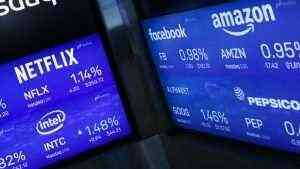
An ETN is a bond but trades like a stock and is backed by an issuer such as a bank. Be sure to check with your broker to determine if an ETN is a good fit for your portfolio. Currency ETFs are pooled investment vehicles how much do forex traders make that track the performance of currency pairs, consisting of domestic and foreign currencies. They can be used to speculate on the prices of currencies based on political and economic developments for a country.
Secretive active ETFs lose out to their fully transparent rivals – Financial Times
Secretive active ETFs lose out to their fully transparent rivals.
Posted: Tue, 05 Sep 2023 04:01:07 GMT [source]
When the need for redemption arises, APs return the ETF shares to the fund and receive the portfolio basket. Individual investors can participate by using a retail broker who trades in the secondary market. Commodity ETFs – hold physical commodities, such as agricultural goods, natural resources, or precious metals. ETFs tend to cost less than mutual funds because the vast majority of them track an index like the S&P 500, Dow Jones industrial average or Nasdaq 100. In contrast, most mutual funds are actively managed by paid pros, which adds an extra layer of fees.
How risky are ETFs?
Duplicating that benefit by buying individual stocks would be much more cumbersome in terms of the research and trading required, and likely more expensive. Commodity ETFs seek to track the price of physical assets such as gold, oil and wheat. Commodity prices are generally not highly correlated to prices for stocks and bonds; moreover, commodity sectors typically have a low correlation to each other. For these reasons investors often use exposure to commodities as a way to help diversify their portfolios, and to align with their views on inflation and the economic outlook.
- ETFs are subject to market fluctuation and the risks of their underlying investments.
- For broad-based exposure to UK equities, there are several UCITS ETFs that track the FTSE 100 index, which consists of the 100 largest publicly listed companies in the United Kingdom.
- Exit load is the charge you must pay to the fund house if you redeem units before a specified period, as mentioned in the scheme.
- Because ETFs are already well-diversified, you don’t have to worry about creating it within your portfolio.
- When the price of the ETF deviates from the underlying asset value, institutions utilize the arbitrage mechanism afforded by creation units to bring the ETF price back into line with the underlying asset value.
Please see the Charles Schwab Pricing Guide for additional information. Standard online $0 commission does not apply to over-the-counter (OTC) equities, transaction-fee mutual funds, futures, fixed-income investments, or trades placed directly on a foreign exchange or in the Canadian market. Options trades will be subject to the standard $0.65 per-contract fee. Service charges apply for trades placed through a broker ($25) or by automated phone ($5). See the Charles Schwab Pricing Guide for Individual Investors for full fee and commission schedules.
Other investment products
To bring the ETF’s share price back to its NAV, an AP will buy shares of the ETF on the open market and sell them back to the ETF in return for shares of the underlying stock portfolio. In this example, the AP is able to buy ownership of $100 worth of stock in exchange for ETF shares that it bought for $99. This process is called redemption, and it decreases the supply of ETF shares on the market. When the supply of ETF shares is decreased, the price should rise and get closer to its NAV. An AP has an incentive to bring the ETF share price back into equilibrium with the fund’s NAV. To do this, the AP will buy shares of the stocks that the ETF wants to hold in its portfolio from the market and sells them to the fund in return for shares of the ETF.
As U.S. Stocks Drop on Bad Data, Eye Active ETFs – Nasdaq
As U.S. Stocks Drop on Bad Data, Eye Active ETFs.
Posted: Tue, 05 Sep 2023 16:50:00 GMT [source]
Both are similar in that they’re sold on exchanges, and they can be traded at prices that fluctuate throughout the day. However, the return for an individual stock is based on the performance of just one company. Investment companies compete to offer the lowest fees, and plenty of funds charge next to nothing for buying and selling. According to Kiplinger, the average mutual fund costs more than 20 times the typical ETF.
Exchange Traded Funds: What Are ETFs?
Examine them on their own merits, including management charges and commission fees, ease of purchase and sale, fit into your existing portfolio, and investment quality. ETFs have proven incredibly popular in the last few decades, and that popularity is set to continue. One of the most popular investing strategies – buying and holding an S&P 500 index fund – has been recommended by legendary investor Warren Buffett. While the influx of cash to ETFs might hiccup when the market fluctuates, the long-term trend toward ETF investing looks clear. For example, the Standard & Poor’s 500 index is perhaps the world’s best-known index, and it forms the basis of many ETFs.

The price of an ETF’s shares will change throughout the trading day as the shares are bought and sold on the market. This is unlike mutual funds, which are not traded on an exchange, and which trade only once per day after the markets close. Additionally, ETFs tend to be more cost-effective and more liquid compared to mutual funds.
ETFs offer investors the ease of stock trading, low-costs, tax-efficiency, and the diversification benefits of mutual funds.
This is in contrast with mutual funds, where all purchases or sales on a given day are executed at the same price at the end of the trading day. There is also a group of ETFs that bet against the success of an index or sector, meaning the asset performs well when the underlying asset struggles. Unlike a mutual fund, a stock ETF charges minimal management fees and carries low expense ratios. This makes it an ideal tool for investors of any skill level looking to maintain low costs and generate consistent returns. As mutual fund managers are actively buying and selling investments, and incurring capital gains taxes along the way, the investor may be exposed to both long-term and short-term capital gains tax. If you’re invested in an ETF, you get to decide when to sell, making it easier to avoid those higher short-term capital gains tax rates.
- While ETFs and mutual funds share some similarities, they have prominent differences.
- ETFs are popular because they offer investors a lot of valuable traits.
- This information should not be relied upon as a primary basis for an investment decision.
- The actual commission paid to the broker might be the same, but there is no management fee for a stock.
Even though capital gains for index ETFs are rare, you may face capital gains taxes even if you haven’t sold any shares. An ETF (exchange-traded fund) is an investment that’s built like a mutual fund—investing in potentially hundreds, sometimes thousands, of individual securities—but trades on an exchange throughout the day like a stock. What’s more, because of things like expenses, longer-term returns for an ETF will vary from those of its underlying asset. Redeeming shares of a fund can trigger a tax liability, so listing the shares on an exchange can keep tax costs lower. In the case of a mutual fund, each time an investor sells their shares, they sell it back to the fund and incur a tax liability that must be paid by the shareholders of the fund. An indexed-stock ETF provides investors with the diversification of an index fund as well as the ability to sell short, buy on margin, and purchase as little as one share because there are no minimum deposit requirements.
Exchange traded funds (ETFs) are a type of security that combines the flexibility of stocks with the diversification of mutual funds. The exchange traded part of the name refers to how these securities are bought and sold on the market like stocks. The fund part refers to how an ETF provides easy access to diversification and exposure to a wide variety of asset classes. ETFs are similar to mutual funds in that you can easily buy a diversified but focused basket of securities.

For instance, the SPDR S&P 500 (SPY) is consistently the most active asset with an average daily volume exceeding 85 million shares in the three months preceding Feb. 28, 2021. Innovation has been the hallmark of the ETF industry since its beginnings more than 29 years ago. Undoubtedly, there will be new and more unusual ETFs introduced https://investmentsanalysis.info/ in the years to come. While innovation is a net positive for investors, it’s important to realize that not all ETFs are created equal. You should investigate carefully before investing in any ETF, carefully considering all factors to ensure that the ETF you choose is the best vehicle to achieve your investment goals.
How To Invest In ETFs
Mutual funds, on the other hand, are required to distribute capital gains to shareholders if the manager sells securities for a profit. This distribution amount is made according to the proportion of the holders’ investment and is taxable. If other mutual fund holders sell before the date of record, the remaining holders divide up the capital gain and thus pay taxes even if the fund overall went down in value. The assets that are underlying are owned by the fund provider, who then forms a fund to track the performance and offers shares in that fund to investors. Exchange-traded funds, or ETFs, are one of the hottest investing trends of the last two decades.
